Paleo baby food recipes
Nourishing Foods For Your Baby | Paleo
Your baby may have just started on solids or started teething and you are very excited about these new stages in your babies life. Are you wondering what are the best foods to provide to your precious one that will be nourishing? I'm enjoying going through this stage with my youngest grandchild and my daughter-in-law has been asking me to make healthy teething rusks, and what are the best vegetables to start feeding him. Also, she wanted to know what would be a better options to store-bought baby cereals? My grandson is loving trying lots of different foods and exploring the different textures and flavours.
In most of the Western world commercially made fortified cereals are recommended for babies first food. The problem with babies eating cereals is, there are many anti-nutrients in grains which can put a strain on babies digestive system, also they don’t make the enzyme (amylase) to break down and digest carbohydrate until they are older. Packaged and processed baby foods are exposed to very high temperatures to preserve them. They become a sterile product that's lifeless, so only use if really necessary.
I'm so delighted to see many mothers today are wanting to make their own homemade baby foods. At first babies food needs to be pureed to make it lovely and smooth, later when baby starts to get a few teeth the food will only need to be mashed, they will enjoy some texture.
The first foods that you introduce to your baby must be easy to digest. Also, you will want to start with small amounts to make sure they don't provoke any allergic reactions (you introduce one food and have it for 5 days or so in a row, no reactions, then try another food, no reaction you can combine those two foods together in one meal). Choose organic vegetables where possible. Serve the food lightly warm, also your baby will require extra water to drink when eating solids. If your baby is dribbling the food out and they actually don't have a chewing mechanism, then they are not ready for solid foods just yet.
LET'S LOOK AT SOME NOURISHING SUPERFOODS FOR YOUR BABY:
SWEET POTATO
This is one of the great superfoods and an excellent choice for babies first solid food. It’s a great source of potassium, iron, copper, vitamin C, beta-carotene, and fibre. Sweet potato is naturally sweet and has a lovely creamy texture, I'm sure your baby will enjoy it. Steam until really soft and puree.
BUTTERNUT PUMPKIN
Butternut pumpkin and other varieties of pumpkin are an excellent source of beta-carotene (for eye health). Pumpkin is also a great source of vitamin C and easy for babies to digest. You can steam or roast until soft and puree.
CARROTS
Another great superfood, carrots are another vegetable that's very high in beta-carotene, which is good for the eyes. Carrots also contain niacin, folate and vitamins A, B6, and C, plus the minerals include, potassium, calcium, phosphorus, magnesium, and iron. Steam or roast until soft and puree.
AVOCADO
Avocados have a lovely creamy texture your baby will enjoy, it's easily digested and is a wonderful first food for your baby. They contain large amounts of good healthy fats (for brain development) and contain niacin, folate and vitamins A, B1, B2, B6, and C. The minerals include, potassium, phosphorus, magnesium, calcium and iron. Choose ripe avocados, no cooking is required and they come in their own package making them perfect for transporting or when you are short on time.
BANANAS
Bananas come in their own package and don't need any cooking, so they are a suitable food for when you are out and about. Bananas contain niacin, folate and vitamins A, B6, C, and E. They are also an excellent source of potassium (for heart health), magnesium, phosphorus, calcium, and iron. Choose ripe bananas and mash well. Bananas can cause constipation in babies, so go easy and don't overdo them.
BLUEBERRIES
Blueberries are another superfood for babies.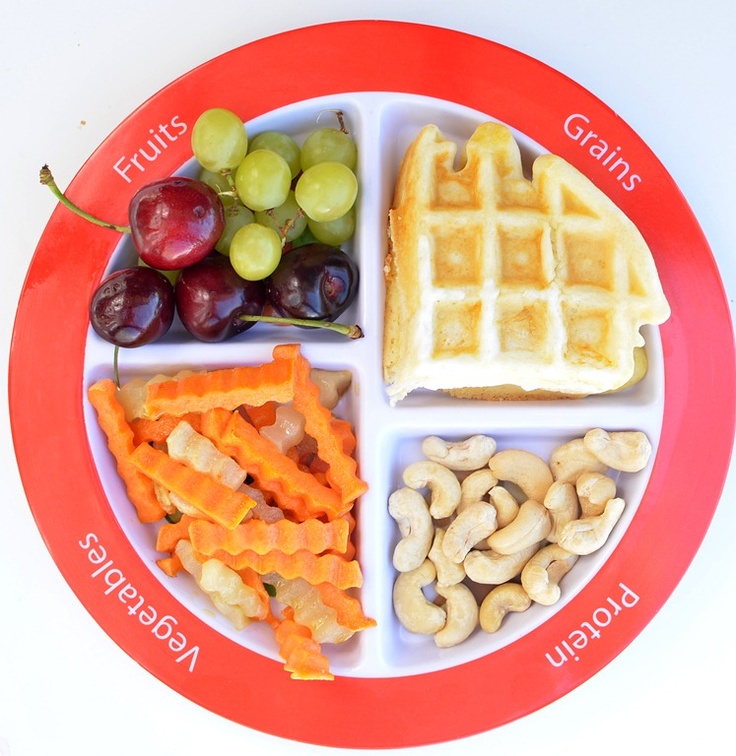 They are full of antioxidants, niacin, folate, as well as vitamins A, C, and K, and the minerals potassium, phosphorus, magnesium, calcium and iron. Stew the blueberries and mash or puree, once baby is older they can eat them whole.
They are full of antioxidants, niacin, folate, as well as vitamins A, C, and K, and the minerals potassium, phosphorus, magnesium, calcium and iron. Stew the blueberries and mash or puree, once baby is older they can eat them whole.
BABY IS TEETHING? - Recipe for Teething Rusk click here for the recipe
Once babies teeth start moving within their gums they will want to bite and chew on things. I created this rusk recipe for my grandson. By making your baby's own healthy teething rusks, you can skip the refined sugars, gluten, flavours or additives that can be found in some commercially made rusks. I've used organic quinoa flakes to produce a firm texture that doesn't crumble or snap off easily like other gluten-free flour options. Click here for the recipe.
BABY PORRIDGE click here for the recipe
This Pear and Quinoa Porridge is a lovely creamy porridge that's perfect for babies older than 7 months and toddlers. Quinoa flakes cook very quickly and are lovely and soft, they are perfect for cold mornings. Quinoa is a complete protein, which means it contains all the essential amino acids our bodies need. Click here for the recipe.
Quinoa is a complete protein, which means it contains all the essential amino acids our bodies need. Click here for the recipe.
Once your baby is handling the superfoods above with no reactions, start mixing in other vegetables that are also a good source of fibre and plant-derived nutrients (swede, parsnip, zucchini, broccoli, cauliflower), approximately from 9 months. Babies also like finger foods, use cooked vegetables cut into sticks for your baby to chew on. Trying all these new delicious nutrient-packed foods is an exciting time in your babies development, they will be looking forward to meal times.
By Susan Joy
Paleo Baby Foods-What to Introduce When
Lifestyle
by Dr. Sarah Ballantyne, PhD,
You can absolutely start your baby off right by feeding them Paleolithic foods, properly cooked (when necessary) and mashed or pureed. There is really no compelling reason why you should ever introduce grains, as there are far more nutritious, easily digested foods that won’t irritate your baby’s sensitive digestive tract. So, here are some frequently asked questions by new moms thinking about introducing solids.
So, here are some frequently asked questions by new moms thinking about introducing solids.
When should you introduce solid foods? The general rule of thumb is that you can introduce solids once your baby is at least 5 months old (6 months old is better), sitting up well, interested in your food, and you have the go ahead from your pediatrician. Watch closely for signs of choking and never leave a baby or toddler unattended while they are eating. You can help prepare your baby’s digestive tract for solids by breastfeeding exclusively (which helps provide probiotics and hormones and enzymes that help mature the digestive tract). You can also give them a small amount of acidophilus/bifidus (buy a capsule that you can break open, and rub a small pinch in their mouth before they nurse or take a bottle) once or twice a day, starting at about three months old (again, with the approval of your pediatrician). Many people prefer a baby-led weaning strategy, whereby you wait until your baby is able to self-feed soft finger foods (some babies will be able to do this as early as 5 or 6 months, but 8-10 months is more usual).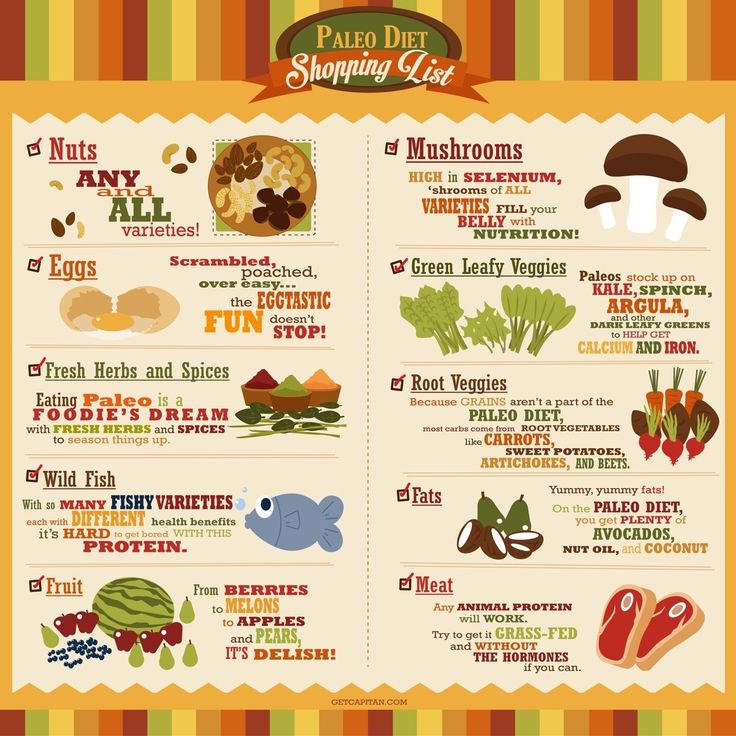 The food lists below are still applicable to a baby-led weaning strategy, just cutting foods up into small pieces instead of pureeing.
The food lists below are still applicable to a baby-led weaning strategy, just cutting foods up into small pieces instead of pureeing.
What consistency should baby food be? First foods should be thinned with breast milk or formula and be very runny (it should pour off of a spoon and really be only slightly thicker than breast milk). Over the first few months, gradually increase the thickness of the baby food. By eight months old, most babies can start to handle a little texture in their baby food (think oatmeal consistency). By ten months old, most babies can handle a soft food, mashed with a fork. Sometime between 8 and 10 months old, you baby will probably show interest in some finger foods (like small pieces of soft fruit or cooked veggies). Watch your baby’s cues and don’t rush them.
What time of day should you feed your baby? Start with just one feeding a day, usually in the middle of the day, when you’re baby is not tired, and stop as soon as your baby is no longer interested. Your baby may only eat a few mouthfuls for those first few meals (or even few weeks of meals). You can also start to introduce sips of water at the same time as you are introducing foods, either from a cup (regular, sippy, straw) or spoon. Over the first few months, you can gradually increase the number of times a day that your baby is eating. By 9 or 10 months old, most babies will happily eat three solid meals a day and maybe even a snack or two.
Your baby may only eat a few mouthfuls for those first few meals (or even few weeks of meals). You can also start to introduce sips of water at the same time as you are introducing foods, either from a cup (regular, sippy, straw) or spoon. Over the first few months, you can gradually increase the number of times a day that your baby is eating. By 9 or 10 months old, most babies will happily eat three solid meals a day and maybe even a snack or two.
Being watchful for allergies. It can take several days for an allergic reaction to a food to present itself. Only introduce one new food every 4-7 days (on the longer side if there are food allergies in your family). You do not need to give that new food every day for those 4-7 days, one or two exposures is sufficient. There are many high-allergy foods like berries, tomatoes, nuts, shellfish, citrus, and egg whites that should wait until your baby is at least one-year old before introducing.
Is it easy to make your own food? Not only is it quite easy, it yields much more nutritious and tasty food for your baby. I like to make a fairly big batch of anything that I’m making and freeze tablespoons full (before thinning so that I can control the thickness as my baby gets older) in ice cube trays (once the food is frozen you can pop the cubes into a bag and label for easy defrosting later). Just make sure you aren’t refreezing anything (like freezing a mash made from steamed frozen vegetables).
I like to make a fairly big batch of anything that I’m making and freeze tablespoons full (before thinning so that I can control the thickness as my baby gets older) in ice cube trays (once the food is frozen you can pop the cubes into a bag and label for easy defrosting later). Just make sure you aren’t refreezing anything (like freezing a mash made from steamed frozen vegetables).
Can you mix foods together? Absolutely! Play with different combinations! Something that might seem odd to you might be delicious to your baby! And most babies prefer one taste at one meal, so it’s a great way to increase variety. Just make sure that all the ingredients are ones you’ve introduced before (or at least all but one).
What are the best First Foods? The best first foods for your baby are mashed ripe avocado, mashed ripe banana, mashed cooked sweet potato, mashed cooked winter squash, pureed liver (preferably pastured/grass-fed) and pastured egg yolk.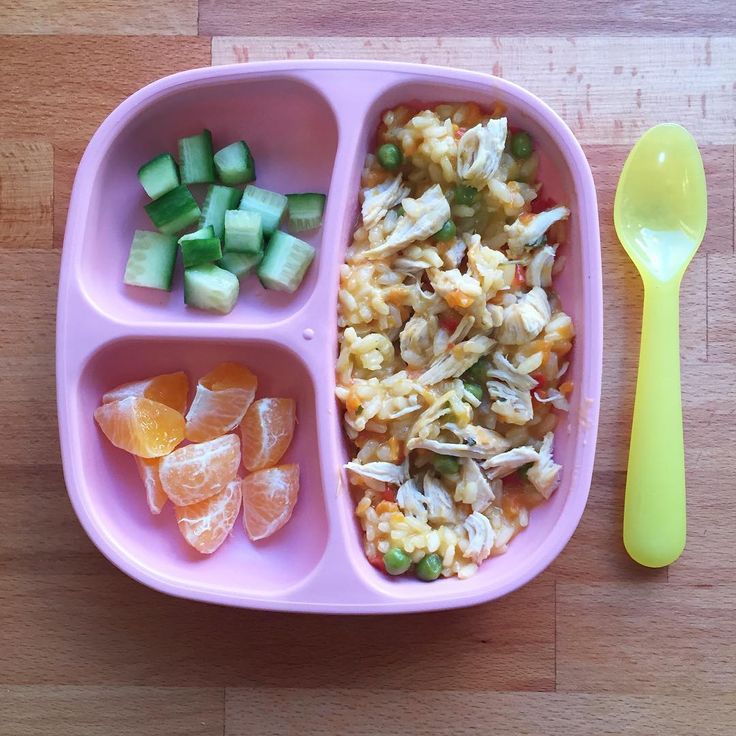 For babies at least six months old, very well pureed, well cooked meats (puree with broth or breast milk) and whole milk yogurt (especially from grass-fed cows) are excellent early foods.
For babies at least six months old, very well pureed, well cooked meats (puree with broth or breast milk) and whole milk yogurt (especially from grass-fed cows) are excellent early foods.
What foods can you introduce when?
This list reflects the digestibility of the foods as well as the ease of preparing it with an appropriate texture for your little ones. This is a guide (adapted from Super Baby Food by Ruth Yaron, which I highly recommend even though I disagree with her dislike of feeding meat to babies and toddlers) and this is not intended to replace the advice of your pediatrician.
| 6 months old | 7 months old | 8 months old |
| Ripe avocado | Pastured Egg yolk | Ground nuts (if no allergy worries) |
| Ripe banana | ||
| Sweet potato | ||
| Winter Squash | Cooked, pureed: | Ground seeds |
| Asparagus | Tahini | |
| Carrots | ||
| Cooked strained/pureed: | Green beans | |
| Apple | Summer squash | Natural cheeses |
| Apricots | ||
| Nectarines | ||
| Peaches | Cottage cheese | Apricot |
| Pears | Apple | |
| Plums and Prunes | Cantaloupe | |
| Cooked/pureed fresh fish: | Honeydew | |
| Raw, pureed: | Tilapia | Kiwi |
| Mango | Salmon | Plums |
| Papaya | Cod | Watermelon |
| Pears | Halibut | Broccoli |
| Trout | Okra | |
| Tuna | Grapes (peeled and quartered) | |
| Pastured Egg yolk | Hake | |
| Whole milk yogurt | ||
| Very well pureed meat: | ||
| Liver | ||
| Organ Meat | ||
| Lamb | ||
| Chicken and Turkey | ||
| Tender cuts of beef and pork | ||
| 9 months old | 10 months old | 1 year old |
| Pineapple | Nut Butters (if no allergy worries) | Milk |
| Finely grated, raw: | ||
| Beets | Summer Squash | Citrus Fruits |
| Brussels sprouts | Carrots | |
| Cauliflower | Greens | |
| Eggplant | Bell Peppers | Tomatoes |
| Kale | ||
| Spinach | ||
| Rhubarb | Egg white | |
| Rutabaga | ||
| Turnips | ||
| Honey | ||
| Cooked onion | ||
| Berries |
Get the entire Go To Bed Online Program
Recharge your life with better sleep!
This is the most comprehensive sleep program ever created! Get all the WHYs and HOW TOs!
Includes 350+ page guidebook and 14-day challenge! Plus great bonuses!
Buy NOW
Paleo for Babies and Toddlers
Is Paleo safe for kids? Absolutely! In fact, children might benefit from Paleo …
Gut Health for Kids
(Created as a guest post for The Paleo Parents) Gut health is essential for …
TPV Podcast, Episode 255: Live Show Part 1
In this episode, it’s the first part of our first live show! We take live …
TPV Podcast Episode 242, Children and Food Intolerances
In this episode, Stacy and Sarah talk about food intolerance and babies. How can …
How can …
Development of Immune Intolerance in Children
Immune tolerance (sometimes called immunotolerance or immunological tolerance) …
The Best Paleo Pumpkin Pie
Pumpkin pie has always been my all-time favorite dessert (and breakfast, for …
Avocado Banana Chip Salad
The inspiration for this salad comes from way back when my toddler was first …
TPV Episode 11 Show Notes: What’s Up With Dairy?
In this episode, Stacy and Sarah discuss dairy and it’s place in the Paleo …
TPV Podcast, Episode 192, Feeding Picky Kids
Ep. 192, Feeding Picky Kids On this episode of The Paleo View, Stacy and Sarah …
The Best Dairy Choice for Growing Children
Mother’s milk is the perfect food for infants, meeting a growing …
Falling In Love With My Food Dehydrator
I never really understood the lure behind owning a Food Dehydrator until going …
TPV Episode 33 Show Notes: Breastfeeding and First Foods
In this episode, Stacy and Sarah welcome Arsy from Rubies and Radishes, author …
About Dr.
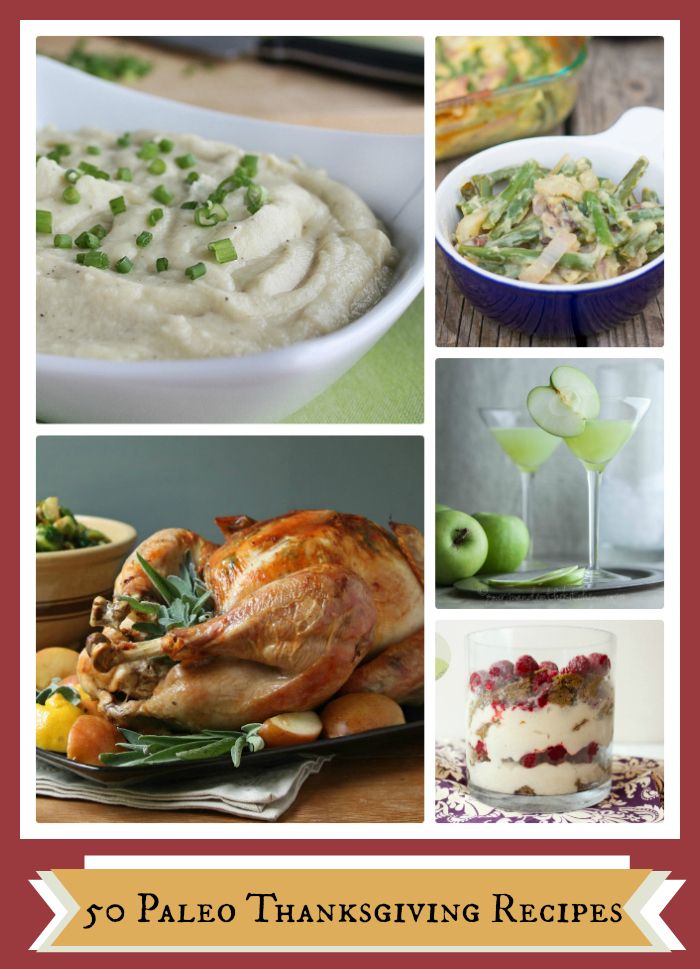 Sarah Ballantyne, PhD
Sarah Ballantyne, PhD Award-winning public speaker, New York Times bestselling author and world-renowned health expert, Dr. Sarah Ballantyne, PhD (aka The Paleo Mom) believes the key to reversing the current epidemics of chronic disease is scientific literacy. She creates educational resources to help people regain their health through diet and lifestyle choices informed by the most current evidenced-based scientific research.
Paleo diet for kids | How to feed a child
How to improve the health of a child? What to feed a child to reduce fatigue during school hours? Is fast food healthy, and does sugar and white flour really harm a child?
Paradoxical as it may seem, but let's be honest: few of us seriously think about it. But those parents who are faced with autoimmune diseases in their children, or with childhood obesity, are forced to think about this.
One of the most effective methods to help solve this problem is the paleo diet.
Sarah Ballantine, author of two parenting books on the Paleo Diet , says this new dietary trend has helped her regain her normal weight, sound sleep, and healthy nerves. In addition, such incurable diseases as psoriasis, migraine and allergies, which tormented her for twelve years, ceased to bother her so much that Sarah refused to use six medications.
In addition, such incurable diseases as psoriasis, migraine and allergies, which tormented her for twelve years, ceased to bother her so much that Sarah refused to use six medications.
A new task loomed on the horizon for a young Paleo mom from Canada - to do her best to improve the health of her two young daughters and her skeptical husband. “It won’t be easy, you’ll need to unleash all your creative skills when preparing Paleo dishes, but the health and vitality of loved ones is worth the effort.”
Thus, Sarah not only became the author of the most famous Paleo blog on the Internet, but also the author of scientific articles on the influence of nutrition on the development of autoimmune diseases and the recipe book “ Paleo approach. A Guide to Healing the Body and Nourishing the Soul" . But her most important achievement is the trust of her own family members. After some time, her husband, who considered himself a relatively healthy person, supported Sarah's desire to give up sugar, cereals and fatty meat from animals that feed on modern compound feeds.
What should children be fed according to the Paleo diet?
The Paleo Diet is a low-carbohydrate diet based on historical evidence of what people ate during the Stone Age. Hunters, of course, ate the meat of dead wild animals and birds, as well as fish. Cavemen were also gatherers, so the Paleo diet includes dishes from seeds, green shoots and roots, all kinds of nuts and juicy fruits of trees.
Certainly the wild fruits were not as sweet as the modern cultivated versions. But, nevertheless, Paleo parents can include them in their children's diet. Inorganic sugar, that is, a product obtained by production, is excluded from the children's menu. Legumes and cereals are also not welcome. For baking bread and pies, coconut or almond flour is used.
So, the Paleo diet means cooking dishes from:
- Low-fat meat of domestic animals and birds grown in natural conditions;
- Game;
- Wild fish and seafood;
- Wild grass seed;
- Spices;
- Nuts, dried fruits;
- Wild berries and mushrooms;
- Low-carb vegetables and fruits (potatoes and bananas are not the best foods for Paleo parents).

How to captivate a child with the Palo diet
Undoubtedly, an important role in the success of this whole undertaking is played by the passion of the child himself. So how do you get there? There are several options
Active outdoor work
Cave men spent a lot of time looking for a new victim on the hunt, while children and women were engaged in gathering. Therefore, families who decide to try the food of a caveman would do well to get out to the dacha or into the forest more often. Paleo moms can get their child to help out in the garden to grow very healthy roots and berries for Paleo kids.
Family hikes and berry picking in the forest
A small hike in mushrooms and berries will help to strengthen the motivation to not leave the Paleo diet. Invite your child to pretend to be a Paleolithic hunter-gatherer and enjoy the taste of a wild strawberry or lingonberry that they picked themselves.
Organize a Paleo Hunt for older children and adults. You can hold a competition for the best caveman costume. And children's makeup can be used to transform ordinary city children into funny animals that lived during the Paleolithic era.
You can hold a competition for the best caveman costume. And children's makeup can be used to transform ordinary city children into funny animals that lived during the Paleolithic era.
The one who has collected the most berries will receive a great reward - the most delicious and juicy piece of game cooked on a fire. Such "cave" adventures will be remembered by children for a long time, and interest in healthy eating will increase, pushing children to their own thoughts about a healthy lifestyle.
Sugar-free pastries
In addition to playing outdoors and picking berries and mushrooms, Paleo-mothers make serious adjustments to the children's menu. First, they try to keep sugary foods to a minimum, which means avoiding store-bought juices, sodas, fast food, dairy products, sweets, and factory-made cookies with margarines and artificial flavors. However, homemade freshly squeezed juices in the diet are not only possible, but should be left. A Kenwood juicer will do the job just fine.
But such drastic measures must be carried out gently and gradually, otherwise the child may become even more cravings for sweets. Start by simply stopping buying granulated sugar and not using it in baking or canning.
Then, after a couple of months, introduce a rule in the family for children - sweets or cookies with sugar can be eaten only on weekends, in small quantities, thereby helping children's taste buds get used to the natural sweetness of organic sugar dishes. It must be warned right away that children will not easily give up their positions, since industrial sugar is highly addictive, despite the fact that it is a strong toxin for the part of the brain responsible for logic and willpower. But gradually, a low-carbohydrate diet will bear fruit: the ability to think logically will be strengthened, the work of the pancreas will be balanced, nervousness will pass, sleep will improve and fatigue will disappear.
Giving up sugar does not mean giving up sugary pastries. Honey is an excellent sugar substitute that has a positive effect on blood insulin levels without causing a quick feeling of hunger, as with the use of sugar-containing foods.
Honey is an excellent sugar substitute that has a positive effect on blood insulin levels without causing a quick feeling of hunger, as with the use of sugar-containing foods.
Each Paleo mom gradually builds up a small collection of her own recipes. Sarah Ballantine already has at least two hundred of them. This super Paleo mom often spoils her daughters with sugar-free pastries, she has at least a dozen muffin recipes alone.
Carrot Honey Mini Muffins Recipe
The classic Paleo diet recipe for these mini muffins uses almond or coconut flour. But since Russia is not in the tropics, you can use whole grain flour for lack of coconut. Although residents of large metropolitan areas can look in the diabetic nutrition department for these ingredients and try a real paleo diet product.
Ingredients:
4 eggs
30 g honey (preferably wild bee honey)
2 tbsp. l. unrefined vegetable oil (coconut oil is ideal)
1. 5 tbsp. flour
5 tbsp. flour
2 carrots (one carrot can be replaced with one parsnip root, it is also very sweet)
1 tbsp. l. flaked coconut
0.5 tsp. vanilla essence
0.5 tsp. soda
0.5 tsp. nutmeg
0.5 tsp. mixtures of ginger and cardamom
0.5 tsp. ground cinnamon
Preparation:
Root vegetables should be peeled and finely grated or chopped in a food processor. Pour honey, oil and vanilla essence into carrot puree. Beat in the eggs. Mix thoroughly.
In another bowl, combine all dry ingredients: flour, coconut flakes, baking soda and spices.
You don't have to add all the spices, you can choose the ones your kids love the most. It is advisable to definitely add cinnamon, because it goes very well with the aroma of sweet carrots.
Pour the dry ingredients mixture into the buttered egg and carrot slurry. You should get a thick fragrant gingerbread dough.
Spoon the sweet carrot batter into paper muffin cups and place in the oven for 35 minutes.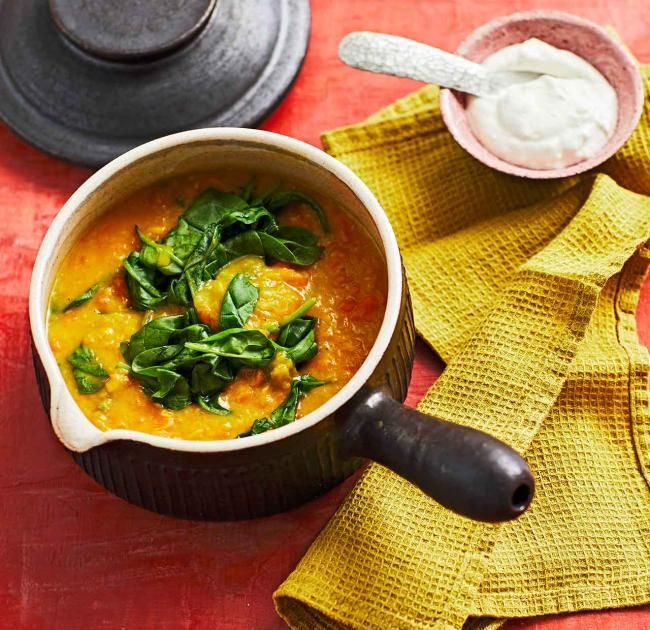 The temperature of the hot oven must be at least 180 degrees. You can use a special silicone or metal mold for baking mini cupcakes. In this case, let the finished cupcakes rest and cool in the mold so that they do not crumble when removed.
The temperature of the hot oven must be at least 180 degrees. You can use a special silicone or metal mold for baking mini cupcakes. In this case, let the finished cupcakes rest and cool in the mold so that they do not crumble when removed.
This recipe can be used to make mini cupcakes with mashed banana, grated apple, mango pulp or persimmon. You can experiment with adding crushed walnuts or sesame seeds to the finished dough.
What do you think: does a child need a paleo diet?
Paleo Mom Sugar Free Baking Recipes | Motherhood
What we feed our children today will likely affect the way people eat tomorrow. The mother of a small American boy, Lauren Cordain, probably guessed this, encouraging the child to eat more fruits and vegetables. Did his father, who bought books about the life of people during the Paleolithic period for an inquisitive teenager, know that his son's passion for history and sports would lead to the emergence of the most modern approach to nutrition - the Paleo Diet?
His mother's teachings about the health benefits of fresh apples and broccoli, and his father's stories about how ancient people lived on wild plants and animals, helped Loren get carried away with the problem of healthy eating. Intensive athletics in his student years further increased the interest of a young American nutritionist in the problem of endurance and natural health.
Intensive athletics in his student years further increased the interest of a young American nutritionist in the problem of endurance and natural health.
What is the Paleo diet and who are Paleo moms?
Founder of the Paleo Diet, Lauren Cordain, professor of health and exercise at Colorado State University, has done significant research over the past twenty years to create an anthropological basis for healthy eating.
All five of Lauren Cordain's books on Stone Age hunter-gatherer diets were bestsellers: Paleo Diets, Paleo Answer, Paleo Diets. Recipe Book, Paleo Diets for Athletes, and Diet Therapy for Acne. She was even awarded a medal from the University of Colorado for her contribution to optimal human nutrition.
The essence of the Paleolithic diet is to avoid sugar, flour products, processed oils, dairy products and legumes. What did early man eat? Fish, meat of herbivores and birds. Add to this wild vegetables, fruits, root vegetables, nuts and get a unique formula for health and active longevity.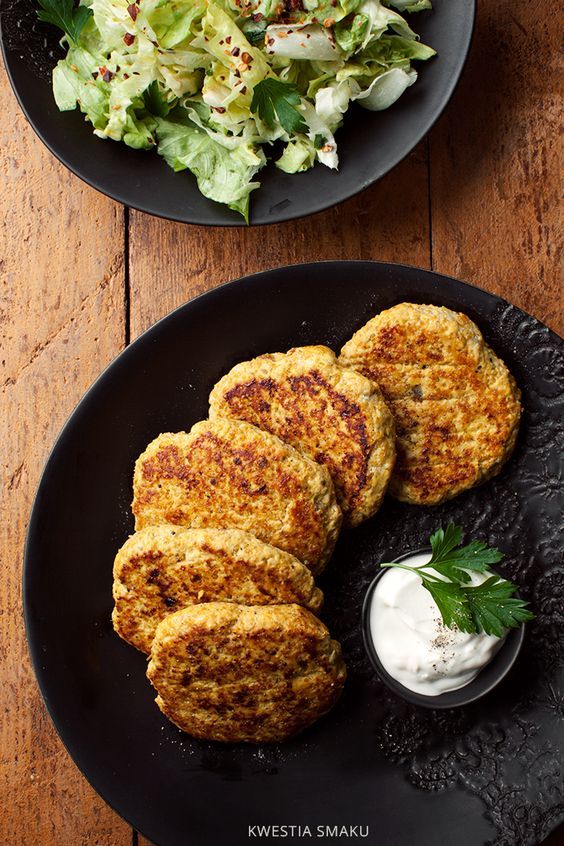
Lauren Cordain's scientific articles (more than 100 of them), books, and an issue of Paleo-Journal helped popularize his ideas. As a result, many athletes were able to achieve better results in sports, and modern mothers, who began to call themselves Paleo-mothers, were able to maintain their own health and strengthen children's immunity.
Paleo mom. Where to begin?
It is not easy to completely abandon the carbohydrate-rich diet that is traditional for Russian cuisine. Porridges, bread and sweet pastries, pasta form the basis of the diet of a modern Russian family. Therefore, giving up sugar can be a great start for a Paleo mom, as well as a very serious challenge for others, because over the past two centuries, “His Majesty Sugar” has come to have almost absolute monarchical power in the kitchens and minds of modern people.
Curious facts from the "Great History of Sugar"
1. The process of obtaining industrial sugar
The process of obtaining industrial sugar
Every tourist who comes to the historical homeland of sugar - India, must definitely try the viscous, slightly greenish juice from real fresh cane. This drink is so sweet that not everyone can drink it. But such "organic" sugar is not as harmful as the one obtained after the complex process of cane processing. The fresh juice from the cane stalks is purified with slaked lime and heated to kill all enzymes. Evaporation creates an unnaturally saturated sugar solution. In the vacuum container, the last moisture evaporates and brown raw sugar crystals appear. To obtain a snow-white color of sugar, another chemical reagent is used as a bleach - sulfur dioxide or carbonic acid. Definitely, fresh sugar cane juice added as a sweetener to baked goods will be a more beneficial ingredient than lifeless bleached sweet crystals.
2. Sugar policy
Sugar was unknown not only to people during the Paleolithic, but in many European countries, not everyone knew about its existence. The rich inhabitants of ancient Rome could afford to add brown sugar crystals to their food at a very high price, because this sweet "treasure" was brought from afar - through Egypt from distant India. The Russian prince and his retinue first tried the miracle sweet only at the beginning of the eleventh century.
The rich inhabitants of ancient Rome could afford to add brown sugar crystals to their food at a very high price, because this sweet "treasure" was brought from afar - through Egypt from distant India. The Russian prince and his retinue first tried the miracle sweet only at the beginning of the eleventh century.
The names of such prominent historical figures as Columbus, Napoleon and Peter I are associated with the war of conquest waged by this extraordinary substance for thousands of years.
Columbus contributed not only to the history of tobacco, but also to the great sugar conquests. The discoverer of America transported sugar cane seedlings from the Canary Islands to Haiti, which caused a rapid growth in the colonial production of granulated sugar for the needs of European states. "White sweet gold" has long been a luxury item and influenced politics in Europe.
French Emperor Napoleon was very concerned about getting freedom from colonial sugar, so he made every effort and financial support for the development of European beet sugar production. Thanks to his efforts, in 1828 France gained complete independence from sugar imports, since one hundred and three factories produced up to five million kilograms of beet sugar per year and completely covered the needs of the population of their country.
Thanks to his efforts, in 1828 France gained complete independence from sugar imports, since one hundred and three factories produced up to five million kilograms of beet sugar per year and completely covered the needs of the population of their country.
From France, through Germany, sugar production migrated to Russia: in 1802, the Tula General Blankenigel founded the first domestic plant. Ninety years later, more than two hundred and fifty sugar factories were successfully operating in Russia, producing more than forty million poods a year. The consumption of sugar in Russia grew every year, which was not slow to affect the general health of the nation. It is no coincidence that Mikhail Lermontov in 1837 sadly exclaims in his famous poem: “Yes, there were people in our time, not like the current tribe: the heroes are not you!” But this was only the beginning of the great sugar procession in the world. Each new decade is marked by a steady increase in the consumption of sweet crystals: in the nineteenth century, the average consumption of sugar was two kilograms, at the beginning of the twentieth century this figure increased nine times, and by the beginning of the new millennium, annual sugar consumption reached thirty-seven kilograms.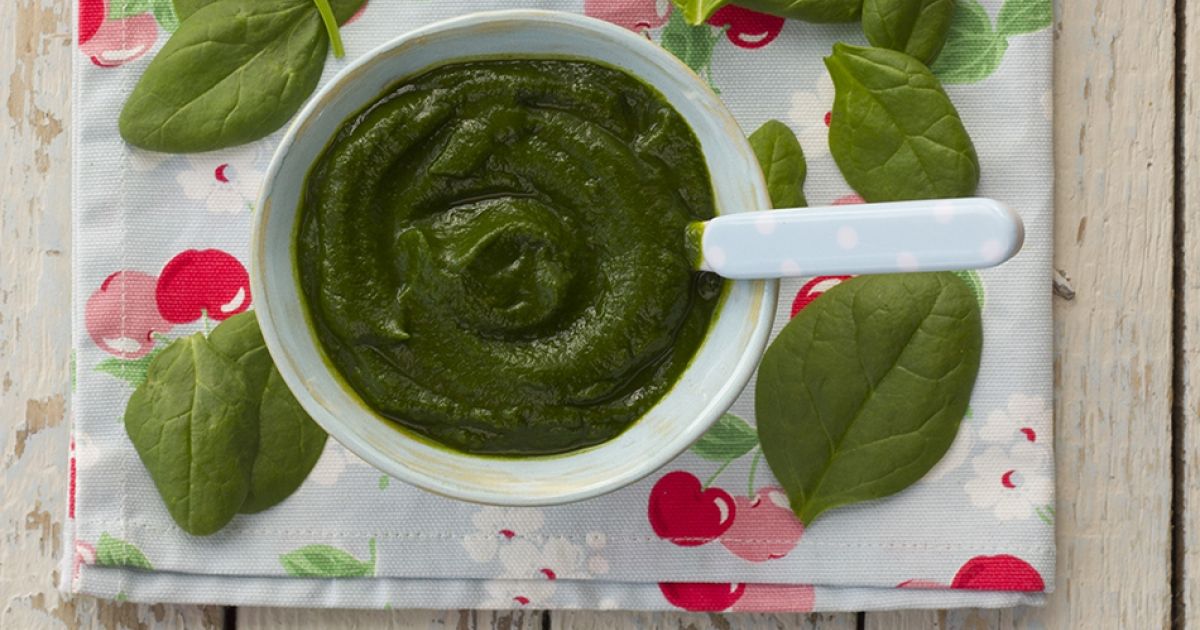
3. Scientists have changed their attitude to sugar
Traditionally, the administration of a concentrated glucose solution was considered by physicians as the first remedy for diseases of the nervous and cardiovascular systems. But in recent years, scientific studies by American and European nutritionists have indicated the need to drastically limit the intake of sugar-containing foods. The concern among physicians is caused by a sharp increase in the number of patients with impaired fat metabolism, which is directly related to the use of sugar.
Why did I stop buying sugar and become a Paleo mom?
Children's doctor's advice
My father, Grigory Andreevich Grigorichev, a highly qualified pediatrician who regularly receives awards and distinctions for quality care of the health of young patients, vigilantly watches his grandchildren grow up. Once he gave me wise advice: “Do not feed your daughter with sugar, it is very harmful. Because my mother and I (she is also a doctor, she works together with her father) have recently very often seen small children with diabetes at our appointments.” It turns out that the insulin-dependent form is becoming more common among Russian children from two years old. “Give me a fruit or a cucumber, but just stop adding sugar everywhere. We love our granddaughter and ask you to think about her future.”
Because my mother and I (she is also a doctor, she works together with her father) have recently very often seen small children with diabetes at our appointments.” It turns out that the insulin-dependent form is becoming more common among Russian children from two years old. “Give me a fruit or a cucumber, but just stop adding sugar everywhere. We love our granddaughter and ask you to think about her future.”
Research by scientists
In California, scientists conducted an interesting and healing experiment in eight hundred boarding schools and nine juvenile colonies (that is, in children's groups where children are not raised by parents). Sugar was completely removed from the children's diet. Instead of sweets, children received ordinary vegetables and fruits. As a result, school performance increased by sixteen percent, and half of the students who were considered mentally retarded before the start of the experiment were found to be completely healthy and capable of learning children.
In Spain, scientists also come to conclusions about the lethality of sugar for brain activity. Lafort syndrome, characterized by dementia, movement disorders and epilepsy, develops as a result of the accumulation of small inclusions of glucose in violation of the mechanism of blocking the glycogen reserve in the brain cells.
Opinion and experience of a nutritionist from Australia
My husband and I began to think even more seriously about the dangers of sugar after reading the scientific articles of Barbara O'Neill, a qualified Australian naturopath and nutritionist who successfully practices children's and women's health rehabilitation at the Misty Mountain Health Retreat . Barbara O'Neill, herself a mother of eight children, cheerful and full of vitality, is enthusiastically engaged in teaching the population the principles of natural self-healing.
In his scientific works, this Australian nutritionist pays serious attention to the influence of sugar on the work of a special part of the brain located in the frontal part of the skull. It turns out that sugar, caffeine, alcohol, nicotine and some toxins from industrial production destroy this part of the brain responsible for logical thinking and willpower. Sugar, being a strong toxin, leads to disruption of brain activity, and also adversely affects the will. A person seems to fall into a vicious circle: a weak will cannot resist sugar addiction, which provokes a low level of intellectual activity in children and adults. In this regard, a person eats more than he needs, unable to stop, and is also subject to many bad habits.
It turns out that sugar, caffeine, alcohol, nicotine and some toxins from industrial production destroy this part of the brain responsible for logical thinking and willpower. Sugar, being a strong toxin, leads to disruption of brain activity, and also adversely affects the will. A person seems to fall into a vicious circle: a weak will cannot resist sugar addiction, which provokes a low level of intellectual activity in children and adults. In this regard, a person eats more than he needs, unable to stop, and is also subject to many bad habits.
My husband and I earn our living by intellectual work: he is a programmer, and I am a teacher. Therefore, the health of the main working organ - the brain - is of paramount importance for us. After some thought, we decided to conduct our research, deciding to avoid industrial sugar as much as possible, switching to organic sugar found in berries, fruits, vegetables and grain seeds. As a result, we noticed that we began to treat each other more calmly when resolving conflict situations. Over the past four months, resistance to stress has significantly increased, we are easier to tolerate climate change with frequent moves. Our child also rarely gets sick, quickly adapts to a new environment, is more obedient and diligent when working independently.
Over the past four months, resistance to stress has significantly increased, we are easier to tolerate climate change with frequent moves. Our child also rarely gets sick, quickly adapts to a new environment, is more obedient and diligent when working independently.
Paleo Mom's Two Sugar-Free Baking Recipes
Cinnamon Baked Apples
This treat for a quiet family evening is quick and easy to make by simply peeling apples, sprinkling them with cinnamon and letting them sit in a hot oven. Apples contain an average of 13 grams of organic sugar, which is a lot in itself. A statin, which is part of the apple pulp, will have a positive effect on the work of a child's heart. Cinnamon has always been famous for its mild sweet taste and aroma, phytoncidal properties in canning, and also as an excellent cure for colds. Although I doubt that people from the Stone Age knew about these miraculous properties.
Ingredients:
Large apples of any variety - 8 pcs.
Ground cinnamon - 10 g
Honey - 15 g
Preparation:
1. Select eight large apples, wash, dry and remove the centers with stones.
2. Place the prepared apples on a baking sheet and use a strainer to spread the ground cinnamon powder evenly over the apples. It is desirable that the cinnamon hit the middle of the fruit.
3. Place the apples in a preheated oven at 175 degrees and let them bake until soft and lightly browned. On average, the baking process takes 20-25 minutes.
4. Put the finished baked fruit on a beautiful dish. Warm apples can be sprinkled with a little honey if sour fruits are chosen for baking.
If you managed to find fruits of a wild apple tree in the forest and cook this dish, then you can safely call yourself a Paleo-mother. And the warm, homely scent of honey, cinnamon, and baked apples is likely to linger in your children's memories for years to come.
Fresh Strawberry and Blueberry Berry Cake
Paleo moms don't usually make cakes with whipped cream.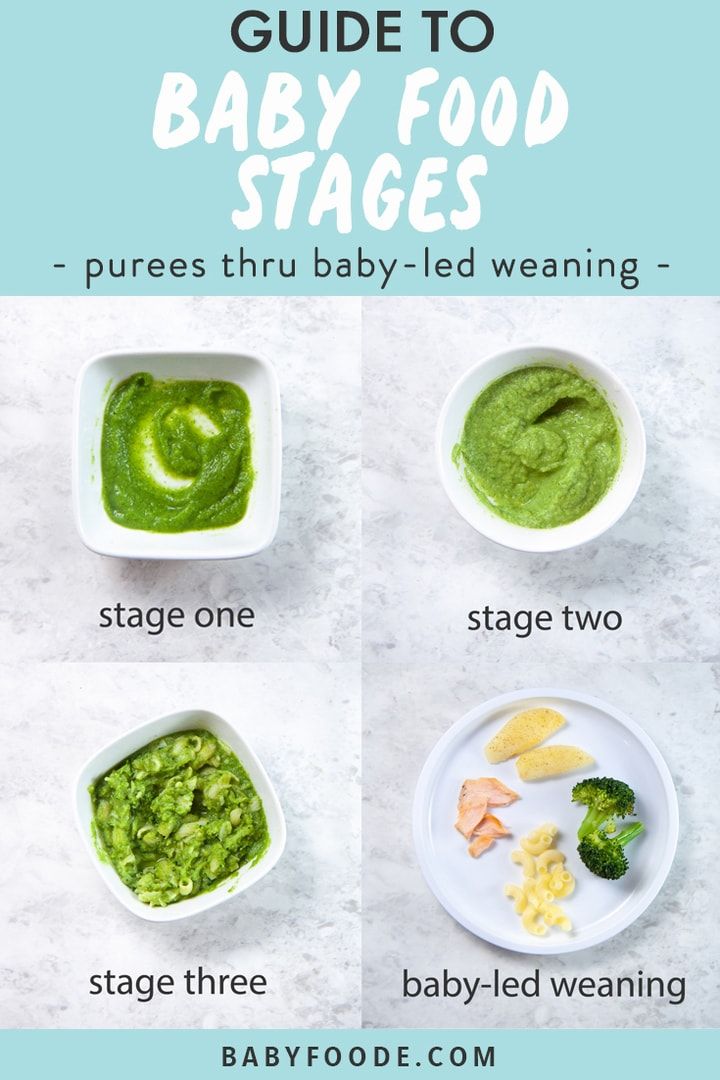 But I offer this recipe to those who decide to start with a simple refusal to add sugar to cream and dough. But all Paleo moms respect fresh berries, especially those that grow in the forest, such as wild blueberries.
But I offer this recipe to those who decide to start with a simple refusal to add sugar to cream and dough. But all Paleo moms respect fresh berries, especially those that grow in the forest, such as wild blueberries.
Ingredients:
Fresh strawberries - 100 g
Wild blueberries - 100 g
Whipped cream 30% - 200 ml
Sugar-free sponge cake - 2 pcs.
Preparation:
1. I usually bake a biscuit beforehand without adding sugar, cool it down and cut it into two layers.
2. Thick, unsweetened cream should be prepared from heavy cream and applied to one of the cake layers.
3. It is advisable to pre-wash the berries and dry them with a towel.
4. Cut strawberries into thin slices. Put half of the existing chopped strawberries on top of the cream on the first cake.
5. Cover the first cake with strawberries and cream with another biscuit.
6. Decorate the top of the cake with the remaining half of the cream and arrange the blueberries and strawberries in random order. In the center of the cake, I try to put a rose of strawberry slices. Blueberries can cover the entire creamy surface of the cake. If you still have strawberry halves, then spread them around the edge of the cake.
In the center of the cake, I try to put a rose of strawberry slices. Blueberries can cover the entire creamy surface of the cake. If you still have strawberry halves, then spread them around the edge of the cake.
The taste of this cake differs significantly from its sugar counterparts, but, nevertheless, sweet strawberries and blueberries will fully satisfy the carbohydrate needs of a healthy child. Moreover, although full-grain flour was used for baking a biscuit, it was still flour. And this is another rich source of carbohydrates. Blueberry itself lowers blood sugar levels and normalizes the activity of the pancreas, which is most affected by the use of sugar.
Paleo Mom Community
Each experienced Paleo mom gradually accumulates her own recipe box. Many of us begin to share our own ideas and experiences on special sites on the Internet. Some even publish their own cookbooks, which contain a lot of useful information on how to raise smart and healthy children.











